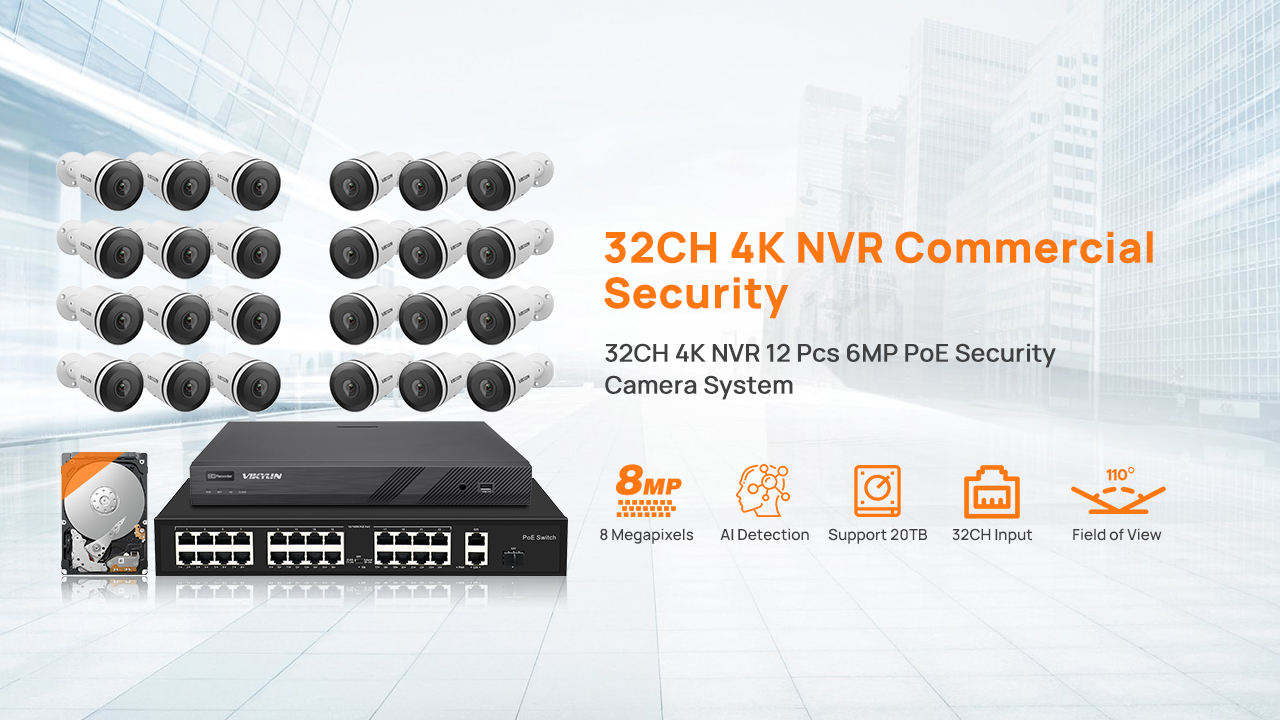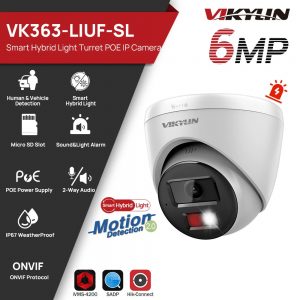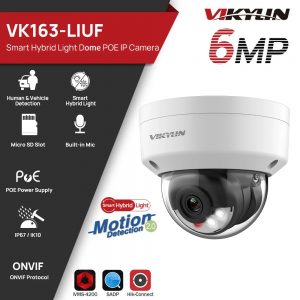Today, many people and industries use PoE switches for IP network cameras. Usually, different types of PoE network switches are deployed for different security cameras systems. The guide below will give you insight into how to choose the right PoE switch for your IP network camera system.

What Is A PoE Switch for IP Cameras?
PoE, short for Power over Ethernet, is a technology designed to simplify wiring by sending both power and data over a single Ethernet cable such as Cat5, Cat5e, and Cat6.
PoE switches usually have multiple ports to support more than two IP cameras. As such, they can power PoE devices including IP cameras, computers, VoIP phones, and other network enabled devices.
Today, PoE switches are commonly used in security surveillance systems, not only because ethernet cables are cheap and easy to run, but also because it supports high-resolution cameras, providing higher video quality for network IP camera systems.
Why Use A PoE switch for Home IP Camera System?
A PoE switch for IP network cameras is a device used to connect and supply power to IP cameras via ethernet cables. The main function of a PoE switch in an IP camera system is to interconnect the cameras to an NVR (Network Video Recorder) and to transmit the data (video and audio) to be recorded on such devices. It usually comes with multiple ports to support more than two IP cameras.
Also, a PoE switch with more power can power the IP cameras that need it, as typical issues include video loss and IP camera performance can result from insufficient power to the IP camera.
In short, the benefits of using a PoE switch for an security alarm system are as follows:
- Longer operation – IP cameras can be installed in more distant locations;
- More connected devices – more network cameras can be connected;
- Greater power output – can provide more power for network cameras;
- Easier to manage – the activity light on the switch will help in troubleshooting IP cameras;
How To Choose A PoE Switch for IP Camera System?
After comprehending the benefits of integrating a PoE switch into your IP camera system, the task of selecting the most suitable one assumes paramount importance. This demands consideration of several pivotal factors. Allow me to elaborate.
PoE Switch Port Quantity
Suppose you’re on a quest to find the right PoE switch for a location adorned with more than four IP cameras. In this scenario, the foremost aspect requiring scrutiny is its port count—be it an 8-port, 16-port, 24-port, or even the more extensive 48-port PoE switch. The allocation of ports hinges upon the quantity of devices slated to interconnect with your PoE network switch, alongside the cumulative power appetite of your CCTV cameras.
PoE Switch Supply Voltage
Many cameras use 12V or 24V power. IP cameras can easily overload or stop working if the wrong supply voltage is supplied. For example, if a 24V IP security camera is powered by a 12V power supply or vice versa, there is a good chance that the CCTV camera will burn or blow up.
PoE Switch Power Budget
Another important factor to consider is the maximum power supply of the PoE switch. The ability of a PoE network switch to power connected devices depends largely on the size of its power supply, which can range from just over 50W to well over 500W. This power budget directly affects how much power each port of the switch can provide to connected devices
If the maximum power of all your cameras exceeds your PoE switch power cap, the PoE switch will not be able to provide enough power to all your IP cameras. For example, a PoE switch with 24-port 370W power supply can supply power to 24 network cameras conforming to IEEE802.3at standard (15.4W per port), while it can only supply power to 12 network cameras conforming to IEEE802.3at standard (30W per port).
If you want to determine how much power is available to each port, you can use the following formula:
Maximum average power per port = (maximum power consumption of the switch – system power of the switch)/quantity of PoE ports
PoE Switch Max Power Supply
The max power of the PoE switch is also important. Should the cumulative power requirements of your security cameras transcend the PoE switch’s bestowed power threshold, the ramifications are palpable—the switch shall falter in adequately empowering all your PoE IP cameras, notably those of the pan tilt zoom (PTZ camera) variety. The paucity of power supply can precipitate video degradation and a lamentable diminishment in your webcam’s performance.
PoE Switch Bandwidth Capacity
In addition to power input, IP cameras require a network connection provided by a PoE switch. There are different types of PoE network switches available in terms of bandwidth capacity. For example, a Fast Ethernet PoE switch can give you 10 to 100 Mbps of bandwidth capacity, while a Gigabit PoE switch can give you 1 Gbps.
With a Gigabit PoE switch, your CCTV camera’s network connection will not be a bottleneck; it will also ensure that you receive full video and recording from the camera. Besides that, high capacity PoE switches allow you to install better quality cameras in your camera security system, such as 2K or 4K cameras.





